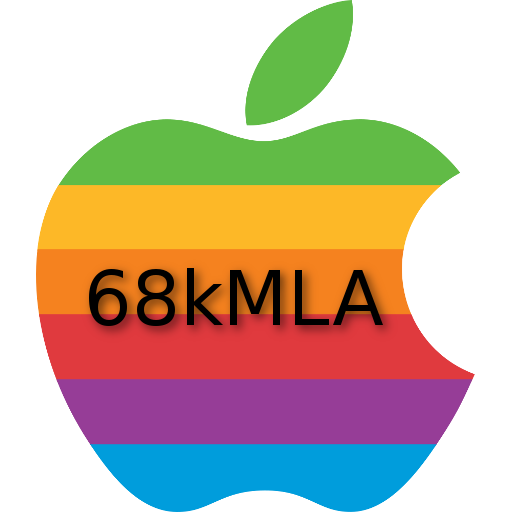For almost 17 years I've been tinkering around with the Apple Interactive Television Box, or Set Top Box (STB). If you don't know much about the device, there's a great wiki for it here. But essentially, it was a semi-Macintosh LC 475 designed to support multimedia playback and interactive programs in hotel rooms, interactive kiosks, and more. It has a ROM slot and a RAM slot.
I'm lucky enough to have both known prototype models, the STB1 and STB3 and recently (with the help of other awesome people) I've gotten them to live! So I want to share what I've learned here.

TL,DR: What is the Apple Set Top Box? How do they work?
The STB1 is an early prototype split into two boards, one being an LC 475 with a ROM slot, and the PDS slot installed on the underside of the board, and has a Mac IIsi power supply. I have an old video about it here. Having a full LC 475 logic board, you have SCSI, ADB, serial, etc. The second board has SCART and other AV style connectors.
The STB3 was produced in far larger numbers and features a polished design, manual and remote. I consider this a production model. It was installed around the world in hotels and other institutions for testing. This unit has external SCSI (HDI-30 like a PowerBook) and ADB, serial, composite video / audio and SCART.
These units have an E1 (not to be confused with Ethernet, although it looks like it) port which was used for networking. Since the STB3 model doesn't have any internal storage, it was designed to boot a lightweight software from it's ROM and then grab data from the network and continue to boot.
For whatever reason, be it the PowerPC chip on the horizon, or a lack of funds, Apple pulled the plug on the project.
STB1 Prototype Discoveries
The STB1 (shown below) is in a large prototype box with two boards and a power supply. Everything is very unfinished, as expected. Powering on this system required me to jump the standby / trickle voltage on the IIsi power supply socket. As all conventional methods to startup the system failed.

Earlier this year, Grant was kind enough to send me a hard drive image from his STB1. (You can download the HD image here) Mine didn't have a hard drive, so this was very curious. Years back on the MacRumors forums, other folks shared some system extensions, but this was the first time a developer hard drive was available. Over a series of live streams I recapped my STB1 and figured out how to get it to turn on.
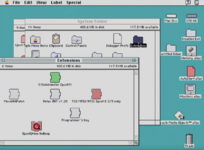

Eventually, I was able to boot to the image Grant provided and got video out on the DB/DE-15 port on the LC 475 board, and eventually composite video out via SCART! The software on the drive was very neat, with developer in-progress versions of demos which were created using Oracle Media Objects. Thankfully the Internet Archive had a CD of the Oracle authoring software and installing it on a Power Mac allows me to open, debug, and tinker with these demos. There are a few development apps, including one with a neat Tropical Sunrise II (Video Architecture Group) splash screen.
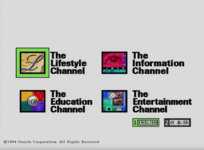

These demos include weather, fashion, travel, movies (HBO) and others. They have their own unique sounds and there is full narration. You can even switch the language from English to Japanese.
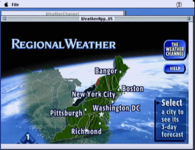
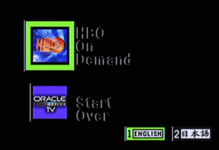
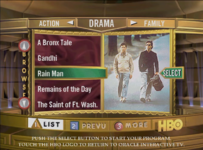
There's also some lovely splash video screens, I've posted some on Twitter here: Weather, Oracle Interactive TV, and Entertainment Channel (featuring Sonic the Hedgehog !)
I'll add the hard drive image file shortly, I just need to ensure it's in the right format as I had to confirm it from a .dmg. Right now the software on the drive seems to kind of work, but multimedia content doesn't play back. This could be due to a hardware error or not the right software extensions are loaded. Either way, the demos, when played on a Power Mac, also don't play back 100%. My plan is to use some of the demos and modify them to work on a Power Mac, if I'm successful, then I'd like to see if they'd play on the STB.
STB3 Discoveries
The STB3 has a ROM slot and depending on how luck you are, you either get a GM LC 475 ROM or a red prototype ROM. The LC ROM will boot into the Mac OS (although with no video out), while the red ROM will instead display an Apple splash screen (shown below) over the composite video signal and error out as it can no longer contact the network it wants.
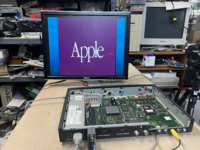
The Red ROMs existed in private collections, but weren't shared anywhere. Thankfully an anonymous individual has sent me the ROM file in order to preserve it. You can grab it here.
Other smart folks have gotten their hands on some of these red ROMs and have made some interesting progress, check out this article: Hacking the Set Top Box System 7.1 ROM
The biggest problem is that with the LC 475 ROM won't output video out on either composite or SCART. Some prototype STB3 units had a DB/DE-15 graphics card in the special PDS slot for development use, but most of the units out there don't. The red ROMs will display an Apple splash screen message, but that's about it.
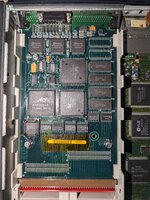
Recently a kind individual named Chris contacted me and shared their ROM for the STB3. Their ROM is unique as it boots to a login screen! Their model was branded for Telia, what I believe is a broadcast TV provider overseas. You can grab this ROM here. I was able to flash this ROM to a ROM SIMM and try it out in my own unit.
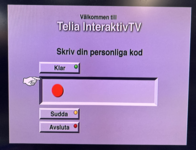
Upon boot, you get the Telia Interactive TV screen, although by default it seems to be in Swedish. I plugged a BlueSCSI in, and although the drive gets power, there is no SCSI activity. I tried a few different startup commands, but made a discovery... if you hold down option on an ADB keyboard while the system is turned on, you are greeted with a Debug menu! Here you can change the menu into English and configure some settings.
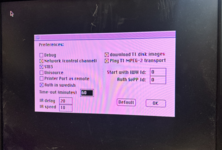
If you uncheck the `auth in swedish` option, the menu will display in English. In addition, if you uncheck the `Network control channel` option, it'll change the branding from Telia to Video Dial Tone.
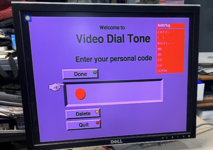
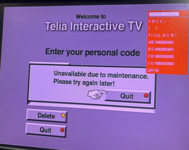
Sadly, this ROM seems to be very basic, and only wants to log into a network that no longer exists. But it's interesting that you can force quit the program. If you do this, you get a message saying it's now safe to switch off your Macintosh.
I've tried to boot off of a SCSI device, but none of the commands seem to do anything (I've tried Shift-Option-Command-Delete + ID# [for SCSI booting commands] and holding down C). The SCSI lights on the BlueSCSI don't even seem to blink, but it does get power.
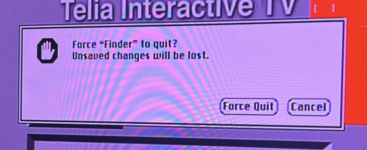
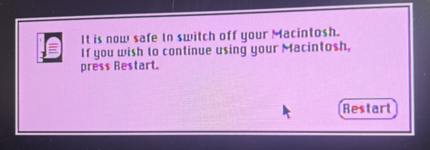
What's next?
There are a lot of smart people out there who have experience tinkering with Mac ROMs, and it would be great if they could explore this more. That's why I wanted to make this thread, and the ROM and hard drive resources available. The goal is to preserve this stuff and discover what these systems can actually do.
A HUGE THANKS goes out to EVERYONE who has helped me with this. I couldn't have done it without you all, so THANK YOU!
Do you have an Apple Interactive Television Box? If so, get hacking!
I'm lucky enough to have both known prototype models, the STB1 and STB3 and recently (with the help of other awesome people) I've gotten them to live! So I want to share what I've learned here.
TL,DR: What is the Apple Set Top Box? How do they work?
The STB1 is an early prototype split into two boards, one being an LC 475 with a ROM slot, and the PDS slot installed on the underside of the board, and has a Mac IIsi power supply. I have an old video about it here. Having a full LC 475 logic board, you have SCSI, ADB, serial, etc. The second board has SCART and other AV style connectors.
The STB3 was produced in far larger numbers and features a polished design, manual and remote. I consider this a production model. It was installed around the world in hotels and other institutions for testing. This unit has external SCSI (HDI-30 like a PowerBook) and ADB, serial, composite video / audio and SCART.
These units have an E1 (not to be confused with Ethernet, although it looks like it) port which was used for networking. Since the STB3 model doesn't have any internal storage, it was designed to boot a lightweight software from it's ROM and then grab data from the network and continue to boot.
For whatever reason, be it the PowerPC chip on the horizon, or a lack of funds, Apple pulled the plug on the project.
STB1 Prototype Discoveries
The STB1 (shown below) is in a large prototype box with two boards and a power supply. Everything is very unfinished, as expected. Powering on this system required me to jump the standby / trickle voltage on the IIsi power supply socket. As all conventional methods to startup the system failed.
Earlier this year, Grant was kind enough to send me a hard drive image from his STB1. (You can download the HD image here) Mine didn't have a hard drive, so this was very curious. Years back on the MacRumors forums, other folks shared some system extensions, but this was the first time a developer hard drive was available. Over a series of live streams I recapped my STB1 and figured out how to get it to turn on.

Eventually, I was able to boot to the image Grant provided and got video out on the DB/DE-15 port on the LC 475 board, and eventually composite video out via SCART! The software on the drive was very neat, with developer in-progress versions of demos which were created using Oracle Media Objects. Thankfully the Internet Archive had a CD of the Oracle authoring software and installing it on a Power Mac allows me to open, debug, and tinker with these demos. There are a few development apps, including one with a neat Tropical Sunrise II (Video Architecture Group) splash screen.

These demos include weather, fashion, travel, movies (HBO) and others. They have their own unique sounds and there is full narration. You can even switch the language from English to Japanese.



There's also some lovely splash video screens, I've posted some on Twitter here: Weather, Oracle Interactive TV, and Entertainment Channel (featuring Sonic the Hedgehog !)
I'll add the hard drive image file shortly, I just need to ensure it's in the right format as I had to confirm it from a .dmg. Right now the software on the drive seems to kind of work, but multimedia content doesn't play back. This could be due to a hardware error or not the right software extensions are loaded. Either way, the demos, when played on a Power Mac, also don't play back 100%. My plan is to use some of the demos and modify them to work on a Power Mac, if I'm successful, then I'd like to see if they'd play on the STB.
STB3 Discoveries
The STB3 has a ROM slot and depending on how luck you are, you either get a GM LC 475 ROM or a red prototype ROM. The LC ROM will boot into the Mac OS (although with no video out), while the red ROM will instead display an Apple splash screen (shown below) over the composite video signal and error out as it can no longer contact the network it wants.

The Red ROMs existed in private collections, but weren't shared anywhere. Thankfully an anonymous individual has sent me the ROM file in order to preserve it. You can grab it here.
Other smart folks have gotten their hands on some of these red ROMs and have made some interesting progress, check out this article: Hacking the Set Top Box System 7.1 ROM
The biggest problem is that with the LC 475 ROM won't output video out on either composite or SCART. Some prototype STB3 units had a DB/DE-15 graphics card in the special PDS slot for development use, but most of the units out there don't. The red ROMs will display an Apple splash screen message, but that's about it.

Recently a kind individual named Chris contacted me and shared their ROM for the STB3. Their ROM is unique as it boots to a login screen! Their model was branded for Telia, what I believe is a broadcast TV provider overseas. You can grab this ROM here. I was able to flash this ROM to a ROM SIMM and try it out in my own unit.

Upon boot, you get the Telia Interactive TV screen, although by default it seems to be in Swedish. I plugged a BlueSCSI in, and although the drive gets power, there is no SCSI activity. I tried a few different startup commands, but made a discovery... if you hold down option on an ADB keyboard while the system is turned on, you are greeted with a Debug menu! Here you can change the menu into English and configure some settings.

If you uncheck the `auth in swedish` option, the menu will display in English. In addition, if you uncheck the `Network control channel` option, it'll change the branding from Telia to Video Dial Tone.


Sadly, this ROM seems to be very basic, and only wants to log into a network that no longer exists. But it's interesting that you can force quit the program. If you do this, you get a message saying it's now safe to switch off your Macintosh.
I've tried to boot off of a SCSI device, but none of the commands seem to do anything (I've tried Shift-Option-Command-Delete + ID# [for SCSI booting commands] and holding down C). The SCSI lights on the BlueSCSI don't even seem to blink, but it does get power.


What's next?
There are a lot of smart people out there who have experience tinkering with Mac ROMs, and it would be great if they could explore this more. That's why I wanted to make this thread, and the ROM and hard drive resources available. The goal is to preserve this stuff and discover what these systems can actually do.
A HUGE THANKS goes out to EVERYONE who has helped me with this. I couldn't have done it without you all, so THANK YOU!
Do you have an Apple Interactive Television Box? If so, get hacking!
Last edited:

